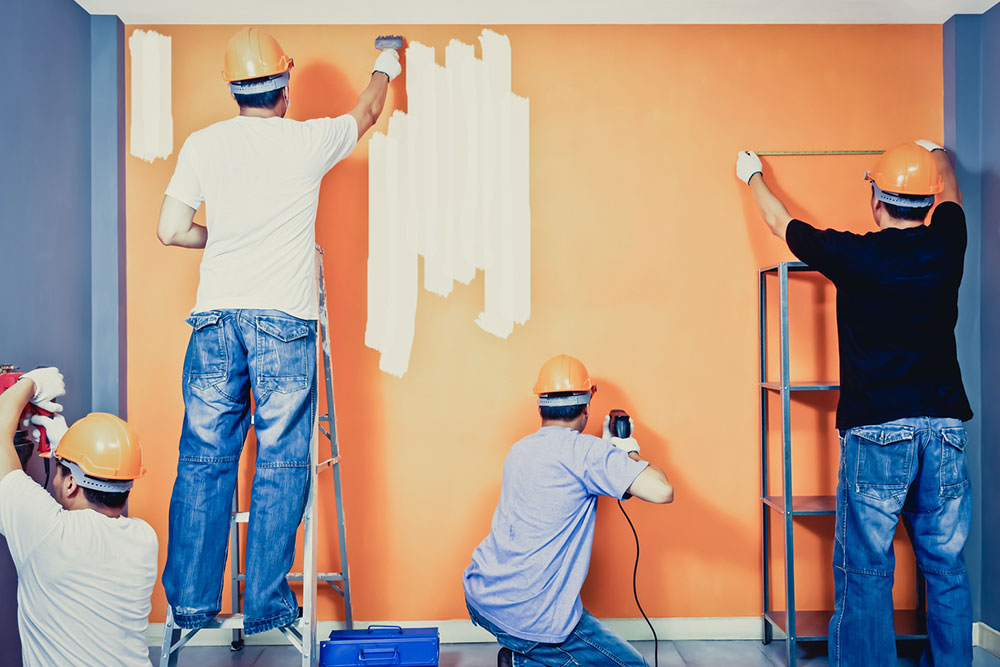9 common home improvement mistakes to avoid

No matter how comfortable a home is at any given time, there can always be a scope for improvement and refinement. Home improvement gives existing homes a new look and feel, enhancing their appeal to their inhabitants. It also involves fixing some of its existing aesthetic problems and consulting experts to find the best interior decoration solutions. So, one must avoid common home improvement mistakes to ensure the designs are functional and cohesive.
Buying furniture not corresponding to the home size
A thumb rule for furnishing a home is to ensure that the size of one’s furniture pieces corresponds to the overall size of the home or room. For example, one may be tempted to buy king- or queen-sized beds, but having such large beds in a rather tiny room can leave it cramped. Similarly, built-in cupboards and petite ottoman sofas are best suited to smaller homes.
Not measuring the outdoor area
It is easy to overlook outdoor spaces when doing home improvement. But there’s a lot to consider when it comes to outdoor areas. This includes checking where the patio is located, whether it is far away from noisy objects like pipes and ACs, and whether it leaves enough vacant space for navigation. Such considerations help one better organize patio furniture, plants, etc., making the outdoor area more aesthetically pleasing.
Not knowing about the work triangle principle
The work triangle principle, also called the “golden principle,” essentially suggests that a kitchen’s gas stove, sink, and refrigerator should form a triangle. Each side of this triangle should be four to nine feet in length so that the kitchen doesn’t look congested and has sufficient space for people to walk around. Finally, no piece of furniture should be placed within this triangle. This principle helps ensure that one’s kitchen is attractive and spacious.
Failing to check the number of sinkholes and their sizes
Sink modification is an important part of home improvement, and one must pay attention to detail. One aspect to pay heed to is the number and size of sinkholes. Sometimes, the number of sinkholes may be insufficient to fit the equipment one buys. For example, one may need three sinkholes to fit a widespread kitchen faucet with a filter spout. Also, the size of each sinkhole should be measured to understand the type of faucets and other equipment they can accommodate.
Going for poor-quality materials
Sometimes, it might be tempting to opt for budget-friendly materials rather than examining their quality and choosing a comparatively expensive one. However, having price as the only criterion for buying home improvement materials can backfire because these cheap materials might not be of good quality. If this happens, one may spend much more on repairs in the long run. So, it is essential to research the brand offering, the material, and the product’s quality before opting for it.
Not having a budget
One of the biggest home improvement mistakes is not having a set budget range and limit. If the total cost of home improvement becomes unexpectedly high, one may face a severe financial crunch, which can affect one’s daily expenses. So, it is important to consider all aspects of home improvement, including overhead expenses that may be incurred, before starting with the process. Accordingly, if one doesn’t have a high budget, it is best to stick to basic improvement processes like plumbing and fixing electrical glitches instead of going for high-end home improvement. In contrast, if one has a good enough budget, there’s no limit to how innovative one can get with improving a home!
Not evaluating existing structural problems
Before starting any renovation work, it is crucial to check for any existing problems or damages in the structure because if these are overlooked, there is a chance that the problem may be aggravated. So, one should closely inspect electrical points, pipes, walls, etc., for any damages and get these issues fixed promptly. For example, if there are cracks in the wall, these should be cemented immediately, and any broken water pipes should be replaced with new ones.
Not paying attention to the lighting
Lighting is an essential part of an elegant home. Still, having a well-lit home is also important to prevent accidents and carry out everyday chores more efficiently. That’s why homeowners should consider lighting an important aspect of their home improvement project. It is best to use budget-friendly layered lighting, which can enhance the home’s look considerably. There should also be sufficient natural light in all rooms. If not, one should look at ways to enhance natural brightness, such as painting the home in light colors, considering window widening options, and setting up mirrors for light reflection.
Not consulting a reputed professional
Home improvement may seem overwhelming, given that several aspects must be considered. However, consulting experienced professionals, such as architects and interior designers, can make this process easier and much more streamlined. When shortlisting professionals, one should check their qualifications and experience and speak with them at length to gauge their proficiency and ideas. Also, one must choose a professional with a track record of on-time delivery of work.









